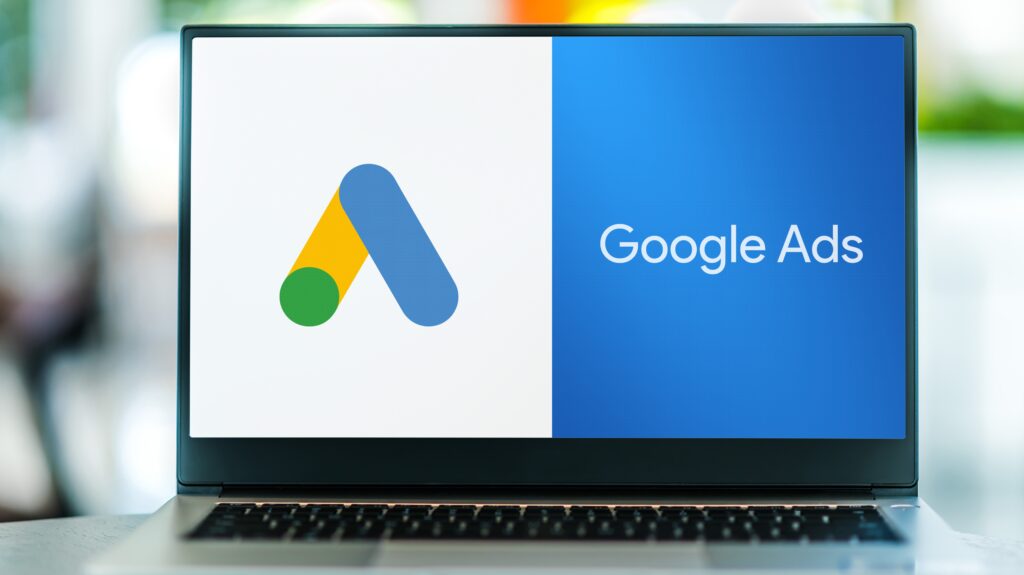If you have an e-commerce business, you probably already know that you should be using paid ads to help scale your business. More specifically, you should be using both Google Ads and Facebook Ads in your digital marketing strategy. Today’s your lucky day, because I’ve decided to share what I know with you.
You might be wondering why you should care about what I have to say. After all, there are thousands of marketing professionals out there. Aside from the fact that I’m a pretty cool and funny guy (or at least, I like to think that I am), there’s also the fact that I’ve been running ads for over five years now.
I’ve spent millions on Google Ads campaigns as well as ad campaigns across Facebook, LinkedIn, and more. Not to mention the fact that my ad agency, Snowball Creations, has consistently helped our clients get over a 5x ROAS on average.
But the main reason why you should consider giving this post a read is the fact that Facebook and Google Ads work. We’ve put in the effort and tested our paid search strategies across many clients and many campaigns.
Basically, if you implement the advice I’m going to share with you, you should get some decent returns. So, grab your coffee (or other hot beverage of choice) and a notebook, and get ready to learn!
P.S. I also have a YouTube video where I do a practical case study about this, so if you’re looking to see a real-life example, give it a watch here.
A step-by-step guide
“The easiest way to learn something is to do it yourself”. I’m sure you’ve heard that bit of advice before, and it is true . . . to an extent. However, it’s also true that it can be nearly impossible to do certain things yourself if you don’t have the knowledge needed to do them correctly.
That’s why, before you start diving head-first into your ad campaigns, you need to understand exactly which steps you need to take to make your Facebook and Google ad campaigns work for you. To help you with this, I’m going to be sharing the steps that I personally take whenever my ad agency gets a new paid ads client.
Step 1: the initial audit
If you come up to me and say “Max, I need you to come up with a paid ads strategy for my business”, I’m probably going to stare at you with a blank expression. I like to think I’m quite a smart guy, but even I’m not smart enough to come up with a successful Google and Facebook Ads campaign without having more information.
I need to know more about your business and which systems you already have in place. Then, my team and I can put on our little detective hats and start investigating to figure out which advertising platform and strategy to use for you.
Step 2: get to know the brand
Now that we’ve done the initial audit, we likely have a much better idea of what your brand is like and how to approach creating a Facebook Ads and paid search campaign for your business. But that’s not enough. When we sign a client, we tend to spend days in hermit mode, just digging into the business and absorbing as much information about the business as we possibly can.
We do competitive analysis and market research. We look at your products, your audience, your pricing. We figure out what you’re already doing, and how we can improve upon it. In a way, it’s kind of like we’re dating your brand. We’re stalking your social media and trying to make you fall in love with us as a company.

Step 3: choose an ad platform
Once we’ve gotten all cosy with your business, we’re ready to take it to the next level and commit. And by that, I mean that we’re ready to choose an advertising platform. Loads of ad platforms can greatly benefit e-commerce businesses, but there’s no denying that Google and Facebook Ads work best for this niche.
Most e-commerce businesses rely heavily on visual and aesthetic elements, and Google and Facebook Ads are the perfect matches for these types of campaigns. Let’s just say that if your e-commerce brand was on Tinder, it would definitely swipe right on Google and Facebook Ads!
Facebook Ads
We’ve laid the foundation, and now we need to build on that by coming up with a marketing campaign, starting with Facebook Ads. There are many ways of approaching your Facebook marketing, but I’ve spent years in the biz testing what works and what doesn’t so that you don’t have to. I know the secret recipe for success and I’m going to pull back the curtain and show you exactly what I do when creating a Facebook Ads campaign.
Step 1: let’s talk money
Here’s some news you don’t want to hear: paid advertising is expensive. But there’s some good news too . . . It’s expensive because it works. The bigger your ad budget, the more money you’ll bring in.
I’d suggest having a budget of at least £2,000 for both your Google and Facebook Ads. Why? Because this is the tipping point where you will be able to get enough data to start getting conversions. And the more data you have, the better you can optimise.
Step 2: testing, testing. . . and more testing
One of the keys to running a successful ad campaign is to put a lot of effort and money into your testing strategy. Testing is one of the biggest factors when it comes to how successful a Facebook Ads campaign is, so there’s a lot of stuff you need to know about it. I’m going to break it down into bite-sized pieces so that you don’t feel like your brain is going to explode.
Select your products, creatives, audience, and copy for testing
There are four key elements that you need to be testing to get a clean testing matrix. Those are: products, creatives, copies, and audiences.
When choosing products to market in your ad campaign, you should stick to products that are already performing well. Choose at least two products to market, since the idea behind testing is to pit two variations against each other to see which one comes out the victor.
It’s the same for creatives. On Facebook, there are multiple ad formats that you can use, such as video ads, carousel ads, and single-image ads. Again, our aim during testing is to determine which of these performs the best, so you should be running ads in all these formats to accurately measure their success.
And then finally, you’re going to do the same for your audiences and your copy. You’re going to target multiple audiences with different ads, and you’re also going to include different styles of copy in different ads.

Come up with a testing strategy
Now that you have your various products, creatives, audiences, and copy all written up, it’s time to do the actual testing. To give you a complete picture of how this will work, I’m going to be doing a practical example. And it’s going to be using maths, so I apologise in advance!
For this example, imagine you have the following:
- 2 products
- 3 creatives
- 3 audiences
- 3 copies
You now need to split them up correctly, and that’s where the maths comes in, because you need to multiply them. Your formula will look something like this:
2 products × 3 creatives × 3 audiences × 3 copies = 54 ad variations.
Yup, you read that right. In order to truly do extensive testing, you are going to need to run fifty-four ads. Of course, that depends on your budget. So, let’s do some more maths.
Let’s say you have a budget of £2,000. And let’s divide that by 54 to account for all our ads.
2 000 ÷ 54 = 37
We now have a budget of £37 per ad per month. If we take it a step further and divide it by 30 to account for the days in the month, we get a total of £1.23 per ad per day.
See:
37 ÷ 30 = £1.23
Okay, enough maths. Let’s get back to the fun stuff.
To summarise: we’ve multiplied the ad products, creatives, audiences, and copies. We then divided our budget by the number of ads to get a monthly budget per ad and then divided that by thirty to get a daily budget per ad.
That daily budget ended up being £1.23 per ad per day. The issue here is that we would recommend having a budget of at least £5 per day per ad set, which clearly isn’t possible based on the budget and variations I’ve used for this example.
If you find yourself in the same position, I’d recommend either increasing your budget or cutting down on some variations – for example, you could start by testing just two audiences and two copies instead of three.
But why is testing so important?
I know I’ve spent a lot of time talking about testing, and you may feel so overwhelmed that you simply decide it’s not worth the effort. I get it. But you can’t have a decent ad campaign without proper testing.
I pride myself on being a good salesman, so I’m going to put those skills to the test and try to sell you on ad testing. Again, this might be easier if I use a practical example (although no maths will be involved this time – you can thank me later).
Let’s pretend you have a skincare brand, and you decide to promote an anti-ageing serum via Facebook advertising. You have the perfect creative, audience, and copy . . . but the product doesn’t perform well, so you get zero results.
Alternatively, your ad is doing really well, but you’re not sure why. Is it because of the product? Or the copy? Or maybe the creative or the audience? There’s no way of knowing, because you just have the info from the one ad to work off of.
Testing helps you figure out what works.
On the other hand, let’s say you do some testing. You run two ads, this time changing the product. You keep everything else the same – the copy, ad creative, and audience – and the only difference is the product that you are marketing. Now, if one ad performs better than the other, you know for sure that it’s because of the product.
You can then use that product and test it against other products, or you can test the same product with different copies and audiences. Can you see how much easier it is to figure out what works this way? Simply put, ad testing allows you to get to the bottom of which ads work best, so that you aren’t spending all your time playing Sherlock.

Step 3: are we done yet?!
No e-commerce strategy is complete without a remarketing campaign. A remarketing campaign targets all the people who have shown interest in your brand in the past, but who didn’t end up making a purchase. Essentially, you want to remind them that you exist, and you want to sell them on your product.
I could make a whole post just about remarketing, but I feel like I’ve talked about testing strategies enough for one post! So for now, let’s keep it simple. For an e-commerce brand, I’d recommend doing a 45-day stack remarketing campaign that combines website visits, engagement, video views, and more. You can then create one big remarketing audience to test with different creatives, copies, and products.
Google Ads
We’ve covered Facebook Ads, and now it’s time to move on to Google Ads. Google is one of the leading search engines out there, which means that getting your e-commerce product on the search engine results page can do great things for your business! If you need a drink refill or a bathroom break, now’s your time. I’ll wait.
And then when you get back, we can do a deep dive into all the great things that Google Ads offers its users!
Step 1: make smart choices
Remember when you were young and heading out to a party and your parents would tell you to “make smart choices”? Well, just because you’re older now, doesn’t mean that advice doesn’t still apply.
Essentially, when it comes to making smart choices for your e-commerce campaign, I’m referring to spending your money wisely. In this specific case, I would recommend a Google shopping campaign and a Google search ads campaign.
You obviously want to spend your money on what works, so collect some of your best-selling products and add them to your campaign. Next, to ensure that people actually find your product, you need to change the product titles in the merchant centre to include relevant keywords so that you have a better chance of reaching your target audience. You want to find the sweet spot here – the titles shouldn’t be too long, but they should still include a fair amount of detail.
Step 2: choose the right campaign
You also need to choose the right campaign for your e-commerce brand. Google offers a variety of different options, and each one has its own role, so you’ll need to choose something that aligns with your business.
I’d recommend putting the majority of your budget (around 60% to 70%) into a standard Google shopping campaign, and the rest into Google search ads, since shopping campaigns tend to perform better for those in the e-commerce niche.
Still, search campaigns shouldn’t be discredited, which is why we’re still putting a fair portion of the budget towards them. A small portion of your budget, around 5%, should go towards a brand campaign to protect your brand name. The keyword for your brand campaign will likely just be your brand name.

Step 3: let’s get technical
Okay, things are about to get technical, so buckle in. This is just a bit more detail for those who are curious about how our agency would approach an e-commerce brand’s Google Ads. I’m going to give you a very brief summary of bidding and conversion strategies, so if you feel a bit lost during this part, feel free to consult other resources for a more in-depth analysis!
The amount of pre-existing data in the account will ultimately determine the initial bidding strategy. With little or no data, starting with a “maximise clicks” strategy will get you the most clicks for the lowest cost. This provides a great learning opportunity and also provides a solid base for you to move on to another bidding strategy once you have enough conversion data.
FYI: The conversions refer to how many people actually end up taking a desired action once they click on your ad. In the case of an e-commerce brand, a conversion would likely be if a customer purchases a product once they click on your ad.
Next, you should figure out your conversion strategy. So, what are your strategy options? There are “maximise conversions” strategies as well as “maximise conversion value” strategies. Maximise conversions strategies focus only on the number of conversions, whereas maximise conversion value strategies take into account the value of the conversions, making them best-suited for e-commerce brands that have a variety of products at different price points.
You also need to have a CPC campaign betting strategy. To break this down a bit, your CPC is your cost per click (in other words, what you pay each time someone clicks on your ad). As for the betting strategy, a very simplified way of explaining Google Ads is that every time you show up in a search, you are entered into an “auction” with thousands of other ads to determine whose ad gets shown.
Your bidding strategy determines how these bidding wars are approached. You can have an automated bidding strategy, but doing it manually allows for more control.
Step 4: don’t dull your sparkle
It can be so easy to fall into the trap of trying to do what everyone else is doing, but the thing that will help you succeed in Google Ads is to stand out from the crowd. If you’re just one search result among thousands, you need to convince customers to choose you, and the best way of doing that is to use what makes you unique and leverage that.
Maybe your business has a great history. Or maybe you offer an eco-friendly alternative to a mainstream product. Find your “secret sauce” and use that to your advantage!
Step 5: so . . . what happens next?
Everything I’ve mentioned thus far should provide you with a solid foundation for running your Google Ads, but that doesn’t mean that the hard work stops here!
Once you’ve done all of the above, I’d recommend creating multiple ad groups and splitting them up to create two responsive search ads per ad group. Then you should start running your ads and see how things go! Ultimately, you should drop down to the ads that perform best.
Once you start seeing results, it’s time to scale. The more you pay, the more you learn. For example, if you test five different audiences instead of two, you’ll be able to narrow down the best audience much sooner!
Conclusion
I hope that this gives you a starting point when it comes to how you can use Google and Facebook Ads to really bring more money into your e-commerce shop. Don’t expect your ads to work wonders overnight. The paid ads game is one of constant learning, so you need to be open-minded and try to get as much information from various sources as you possibly can. Read blogs, watch videos, listen to podcasts, and invest in books like these essential books for ecommerce owners.
I also hope that this gives you some insight into why money really matters in the ad agency. The bigger your budget, the easier it is to increase your profitability. As they say, you’ve got to spend money to make money.
It’s a scary thought, so if you’re filled with the idea of pouring thousands into an ads strategy without solid results, contact us at company@snowballcreations.com to learn how we can help you!